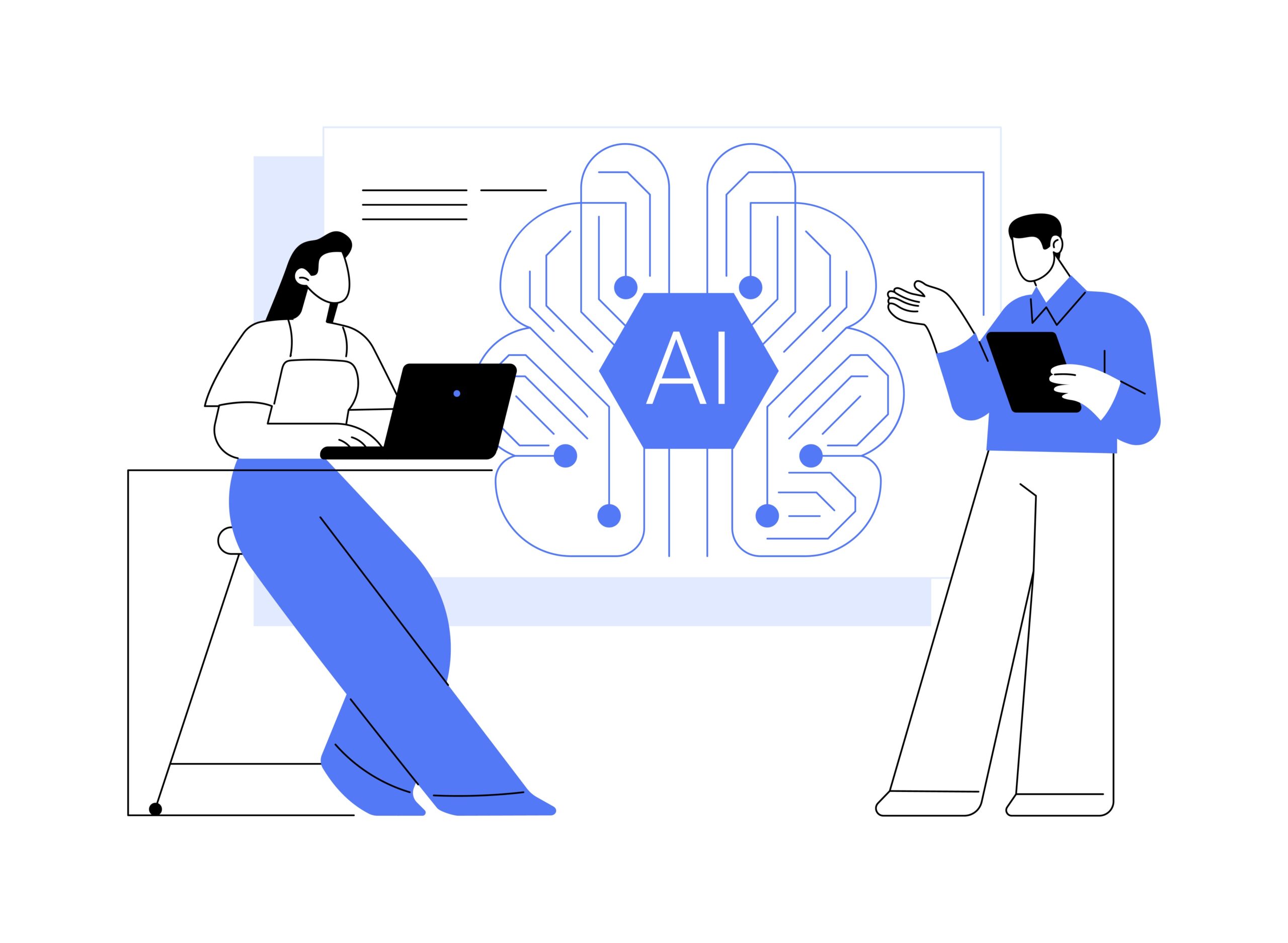Understanding the True Landscape of AI in Enterprises – A VuNet Perspective
- Oct 15, 2025
- Blogs
- 6 min read
AI is being spoken about everywhere today. From big tech ads promising “AI for Business”, AI assistants on our phones, and retailers using AI shopping helpers, the examples are endless. Add to this the surge of ChatGPT, which for many has become the face of AI itself. These are examples of consumer AI, designed for everyday use, quick interactions, and for broader access. But when we talk about Enterprise AI, the picture is very different.
In this blog, we want to clear up some common myths, explain what Enterprise AI really means, outline its capabilities and limitations, highlight the regulatory expectations, and the trends that will shape Enterprise AI.
What is Enterprise AI?
Think of Enterprise AI as the difference between a mobile app we use for fun and an air traffic control system. While both use technology, only one has zero tolerance for failure.
Enterprise AI is the use of advanced AI technologies, including machine learning, natural language processing, computer vision, and agentic AI within enterprise business processes. If done right, it helps automate repetitive work, unravel insights from enterprise data, and improve decision-making, efficiency, risk management, and customer experiences while maintaining transparency, fairness, and compliance.
Key characteristics of Enterprise AI:
- Scale: Processes massive datasets across multiple business units
- Integration: Connects seamlessly with existing enterprise systems like ERP, CRM, and databases
- Governance: Follows strict policies, audit trails, and compliance frameworks
- Reliability: Ensures consistent performance with minimal downtime
- Security: Handles sensitive business data with enterprise-grade protection
Enterprise AI vs. Consumer AI
Consumer AI is built for convenience. Enterprise AI is built for scale, resilience, and compliance. The difference is like comparing a paper plane with a commercial airliner – they both fly, but the requirements, complexity, and stakes are entirely different.

Fig 1: Contrasting consumer AI and enterprise AI
Myths about Enterprise AI
To understand Enterprise AI better, it helps to clear some myths and the confusion surrounding it.

Fig 2: Myths and reality of enterprise AI
Capabilities and Limitations of Enterprise AI
AI can bring real value for enterprises. But it can fall short if not designed well.
What Enterprise AI can do:
- Front-End AI: Chatbots, 24×7 virtual assistants with context-aware responses, loan/credit application helpers.
- Back-End AI: Automating loan processing, Fraud detection, transaction monitoring, underwriting, and credit risk scoring.
- Compliance AI: Automated AML / KYC checks, suspicious transaction reporting, and regulatory reporting.


Fig 3: Sample use cases for enterprise AI
Where Enterprise AI struggles:
- Complex Reasoning: Requires human oversight for nuanced decisions
- Data Dependencies: Requires good quality data, as it gets as good as the data it’s trained on
- Context Understanding: May miss subtle contextual cues that humans catch
- Regulatory Changes: Needs retraining when regulations evolve
- Ethical Dilemmas: Cannot handle subjective moral decisions
In high-stakes sectors like banking and financial services, even small errors can result in serious consequences. That’s why understanding both strengths and weaknesses is critical.

 Fig 4: Effects of enterprise AI failures
Fig 4: Effects of enterprise AI failures
Some examples of notable Enterprise AI failures include:
| Project | Objective | Failure | Penalty / Issue | Lesson Learnt |
|---|---|---|---|---|
| IBM Watson Health (USA) | Designed to transform cancer care using AI | Trained on incomplete clinical data, gave recommendations that didn’t follow medical best practices or integrate with workflows. | Low adoption, clinicians lost trust, assets sold at ~$3Bn loss. | AI without domain-ready data and workflow alignment fails. |
| Apple Card with Goldman Sachs (USA) | AI-based credit assessment | Due to algorithmic bias, women with a similar financial background to men were given lower credit limits. | Probe by the New York Department of Financial Services into algorithmic | Unmonitored AI bias causes legal, reputational, and compliance risks. |
| Robodebt (Australia) | Automated welfare-debt recovery system | Faulty income data matching resulted in thousands of false debt notices. | Public backlash resulted in a $1.2Bn government settlement and new governance rules. | Poor oversight in public AI causes legal and social backlash |
| Clearview AI (Netherlands) | Facial recognition database | Scraped images without user consent to build a biometric database — GDPR violation. | Fined €30.5 million by Dutch authorities. | Illegal data sourcing in AI leads to heavy penalties. |
The Regulatory Landscape
To avoid these consequences, enterprises should design their AI ecosystem to work with a clear understanding of the compliance and reporting requirements. Here are some of the requirements.

Fig 5: Compliance and reporting requirements of enterprise AI
To guide safe adoption, regulators are setting clear expectations. For example, the Reserve Bank of India (RBI) has recently introduced the FREE-AI Framework – a blueprint for responsible and ethical adoption of AI in the financial sector. It is based on seven principles or “Sutras”: Trust, Fairness, Accountability, Sustainability, Transparency, Privacy, and Reliability.

Fig 6: Recommendations from RBI’s free AI framework
The Future of Enterprise AI
Artificial Intelligence is no longer just a support technology—it’s rapidly becoming the backbone of how enterprises operate, compete, and innovate. From industry-specific AI models to autonomous agents, the next wave of AI will transform business processes, compliance, and customer experiences. At the same time, advancements in infrastructure and data strategies are pushing the boundaries of what’s possible.
Here are the key trends shaping the future of Enterprise AI:
Agentic AI Systems
| Domain-Specific Large Language Models
|
Regulatory Evolution
| Hyper-Personalization
|
What will power these trends are advancements in technology, such as:
Smarter Infrastructure:
- Edge AI deployment for faster processing
- Quantum-enhanced AI for complex optimization problems
- Neuromorphic computing for energy-efficient AI
Mature Data Strategy:
- Federated learning for privacy-preserving AI
- Synthetic data generation for model training
- Real-time data streaming and processing
Final Thoughts
Enterprise AI is not just about deploying models—it’s about building an ecosystem that combines strong data strategies, governance, compliance, and continuous monitoring.
The enterprises that will thrive are those that treat AI not simply as a technology, but as a business transformation enabler. They invest in the right foundations, start with clear use cases, maintain focus on responsible AI practices, and continuously evolve their capabilities.
With regulatory frameworks like RBI’s FREE-AI, enterprises have the right guide to make AI adoption responsible, reliable and future-ready.
The question isn’t whether AI will transform your enterprise. It’s whether you are prepared. So ask yourselves
- Are my AI decisions traceable?
- Can I explain the AI driven decisions to regulators?
- Is my AI workflow working without data bias?
- Is my data clean and contextual enough for AI to make good decisions and predictions?
In our next blog, we will tell you how VuNet can help you answer these questions with confidence through its AI-driven Business-centric Observability platform and solutions.










